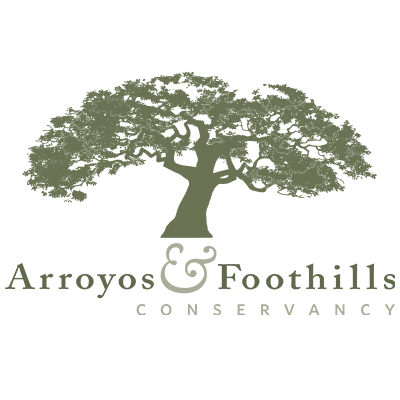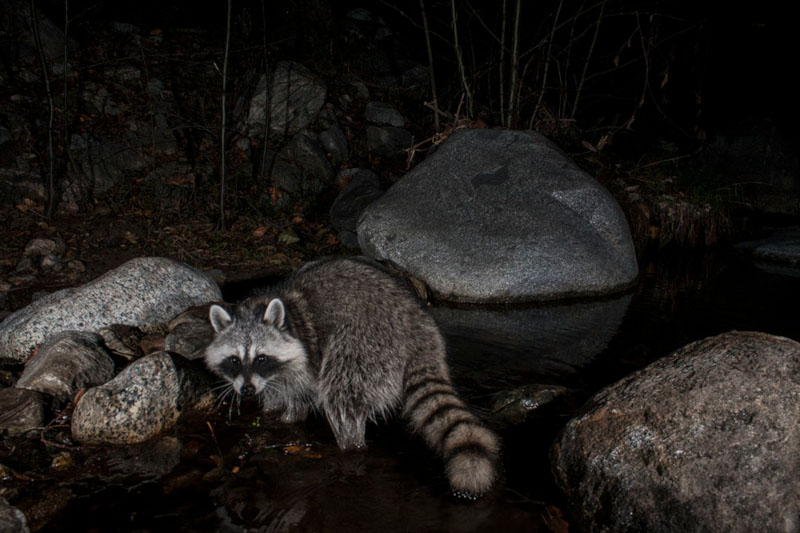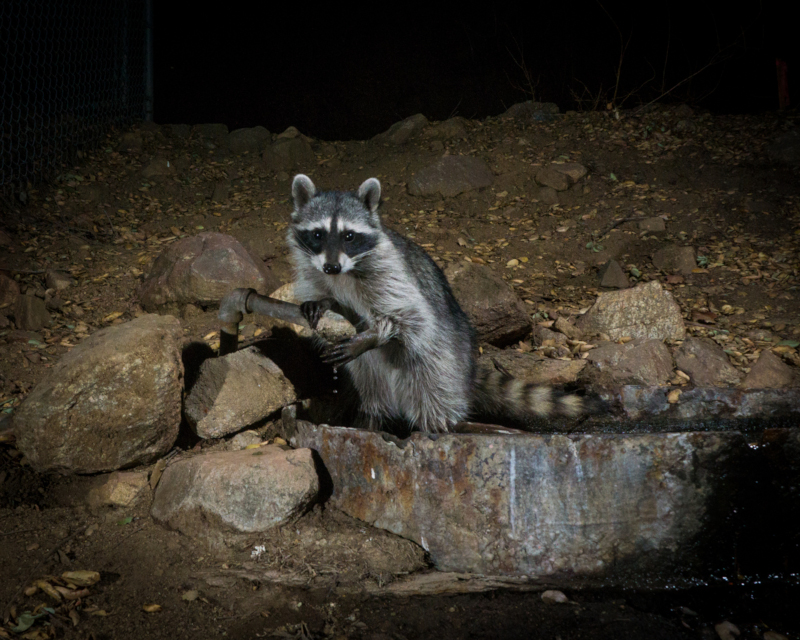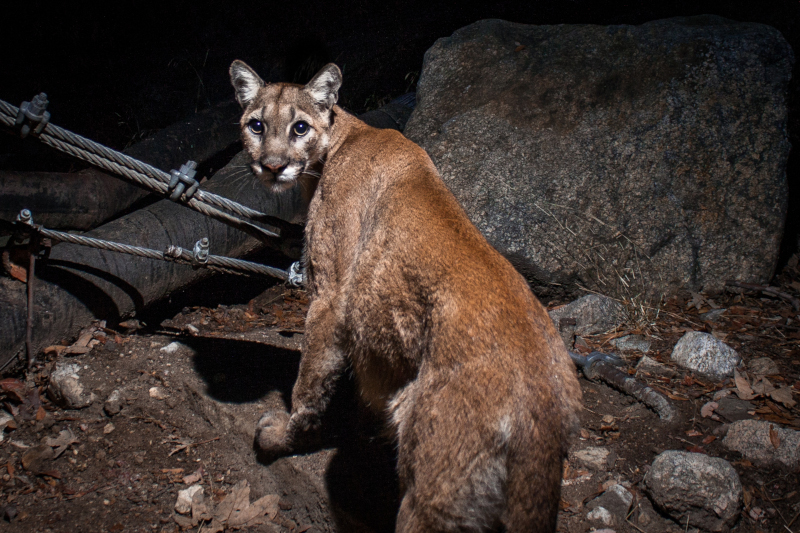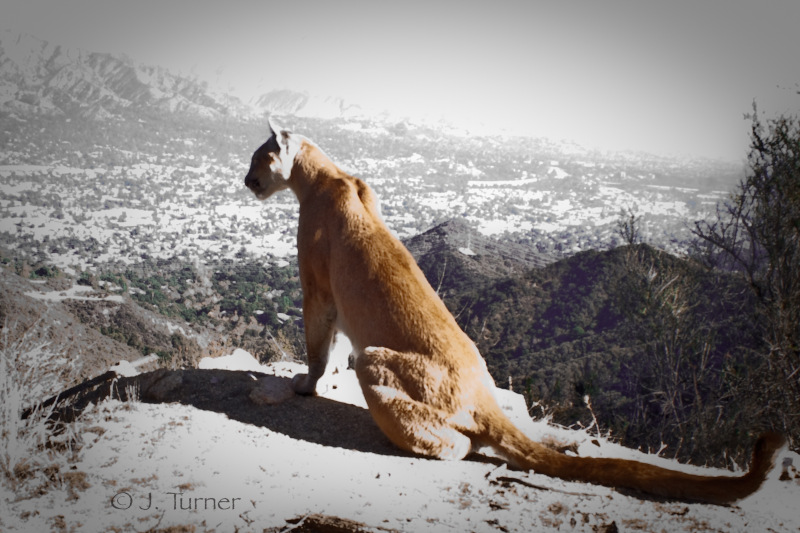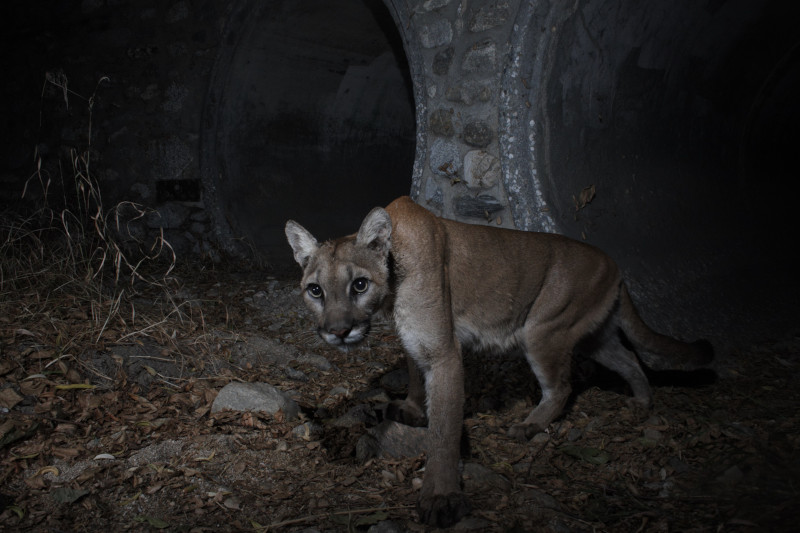Hahamongna to Tujunga Wildlife Corridor Initiative
Biologists describe the Verdugo Mountains as a biological island. Development surrounds it. There are other urban ranges in the Los Angeles area that are also islands of natural habitat. The now-famous mountain lion “P-22” is stranded in Griffith Park. Fifteen to twenty collared lions live in the Santa Monica Mountains. Even more are isolated in the Santa Ana Mountains just south of us.
In June, 2016, a mountain lion collared and tagged as “P-41” and a black bear tagged as “2” were roaming the Verdugo Mountains. P-41 had been there for four years and has sired at least three pair of cubs: two were killed trying to cross the 2 and 210 freeways; two made it across the 210 but were unable to survive on their own and must live the rest of their lives in a wildlife sanctuary; and of the most recent litter, one was found on a street in Burbank but did not survive and the other has not been seen since shortly after birth. In June of 2017, Bear 2 was tracked from La Canada through Cottonwood Canyon into the San Rafael Hills and past the 2 Freeway into the Verdugos. In September, 2017 the La Tuna broke out in the corridor. We think it drove P-41 to try to escape into the San Gabriel Mountains. Sadly, on Ocober 4th, P-41’s body was found. A route of safe passage from the Verdugos into the San Gabriels could have prevented this tragedy.
Los Angeles is one of only two megacities — Mumbai, India, is the other — where large predatory cats live in an urban setting. Threats to the Los Angeles metropolitan area mountain lion population are growing. Typically, a mountain lion requires 200 square miles of habitat to support it, but they are living in dramatically closer quarters in these urban islands. This leads to inbreeding in these isolated genetic pools. For example, on April 4, 2017 a cub was born to a brother and sister. These animals will go extinct without genetic diversity.
It is established policy to minimize interference in the lives of these wild animals. For instance, mountain lions are not moved from one location to another Accordingly, the solution is to create passageways for wildlife to move between these areas of natural habitat, including the surrounding mountains, so they can mix with the wider population of their species and hunt and forage in larger landscapes. The Arroyos & Foothills Conservancy has identified opportunities to do just that. AFC is working to secure passageways between the Verdugos, the San Rafaels, Griffith Park and the San Gabriel Mountains. One goal is to create a wildlife corridor between the San Rafaels and the Verdugos that goes on to link to the San Gabriels at the far end of each range – at Hahamongna Watershed Park in Pasadena and at Tujunga Wash. AFC is also working on a possible corridor between Griffith Park and the Verdugos. If successful, wildlife, including P-22, will be able to move safely between these areas to mate with much larger populations of their species.
Here are a few particulars:
- AFC completed a study of the Corridor to determine the ecological value of the individual parcels. The land was evaluated and ranked into four tiers of importance; 508 parcels are in the top tier.
- AFC has created a GIS database-driven land priortization tool to rank those top tier properties in relative order of importance for conservation in order to direct resources to the most critical locations.
- The Corridor features land of exceptional value that is essential for sustaining ecological and evolutionary processes across the landscape. There are 20 different natural community types; 47 species and plant communties listed as threatened, endangered, or sensitive; habitat that is critical to the survival of 2 species, the southwestern willow flycatcher and Santa Ana sucker; 3 areas disginated by the Cpounty of Los Angeles as Significant Ecological Areas; The Nature Conservancy’s identification of Tujunga Valley as an eco-regional priority; and an area designated by Audubon as an Important Bird Area.
- AFC is purchasing one of the highest priority parcels: 11-acres in Cottonwood Canyon that serves as a gateway from the Arroyo Seco to the San Rafaels. It contains one of the few perennial springs in the area, so critical to wildlife. The land cost will be paid from three separate governmental agency grants; the community has contributed in excess of $425,000 toward the project and for further work in the Corridor.
- AFC establishes “Friends” stewardship groups to help manage each proeprty they purchae by reaching out and educating the community and then providing resources and expert support. The National Park Service is helping AFC do this for the corridor, with a grant of 340 hours of skilled staff time. The Friends of Cottonwood Canyon is already hosting events and field trips in the canyon to nurture the next generation of land stewards
We are seeking funding to:
- Establish our staff GIS capacity to update our maps and database information
- Use our biological study and database driven land prioritization tool to set priorities for conserving land within the Corridor
- Engage partners from the conservation community, cities and the county
- Educate funders about the Corridor
- Reach out to educate communities near the Corridor about wildlife living among them, the benefits of habitat restoration and need for fire fuel reduction
- Establish Friends groups within these communities

